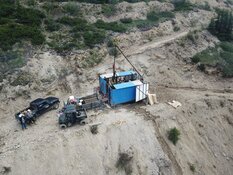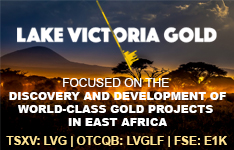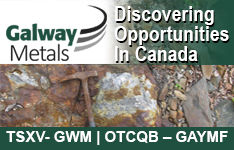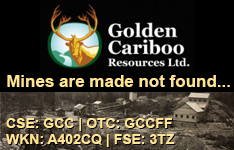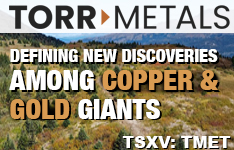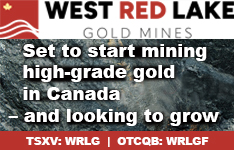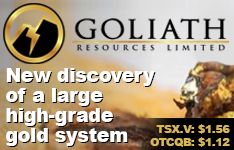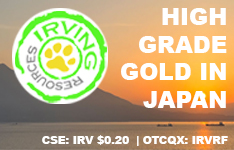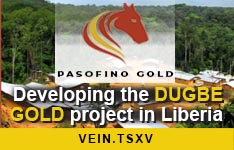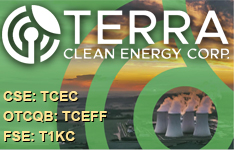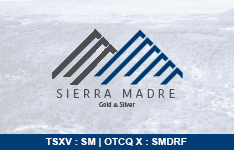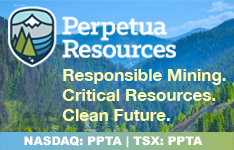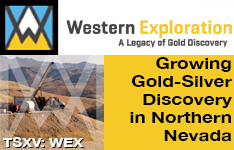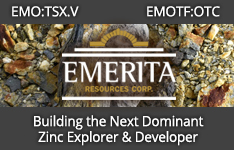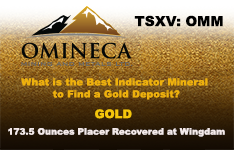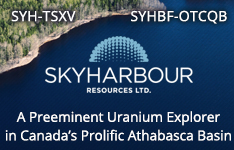Harvest Gold Corp. (HVG:TSX.V; HVGDF:OCTMKTS) has resumed diamond drilling at the central area of its flagship Mosseau property, located in Quebec's Abitibi Greenstone Belt. The company announced on November 4, 2025, that drilling will restart following the receipt of Authorization for Impact-Causing Exploration (ATI) permits, which had experienced an unexpected delay of nearly ten days. The permits allow Harvest Gold to proceed with drilling in a less-explored, heavily wooded section of the property where new access roads have now been cut and drill pads prepared.
Approximately 2,800 meters of a planned 5,000-meter drill program has been allocated to the central zone. According to President and CEO Rick Mark in the news release, "These targets are important to the unfolding story of Mosseau as they are in a large area on the eastern side of the Kiask River Mineralized Corridor that has not been drilled." The central zone lies east of the Kiask River Fault, a key structural feature believed to host multiple shear zones prospective for gold.
Assay results from the recently completed northern area drill program are still pending. Harvest Gold attributed the delay to increased demand at assay labs during the peak of Quebec's fall field season.
In addition to drilling, the company's fall 2025 exploration activities have included prospecting and mapping conducted by IOS Geosciences in the southern portion of Mosseau and on the adjacent LaBelle property. Four field crews are currently conducting soil sampling, which is expected to conclude shortly.
Gold's Enduring Role as a Financial Anchor
A recent report by Jeff Carlyle for Goldfix, published October 28, reaffirmed gold's long-standing reputation as the "currency of last resort," a title it has held for millennia. The analysis noted that although gold prices have diverged from traditional benchmarks such as real interest rates and the U.S. dollar, institutional investors continue to favor the metal. Gold's appeal as a hedge against currency debasement, de-dollarization, and portfolio concentration has remained strong, with central banks leading the demand surge amid geopolitical instability and shifting global trade patterns.
One key driver highlighted in the report was the Western freeze of approximately US$300 billion in Russian central bank assets in 2022. In response, many emerging market central banks began reducing their holdings of US Treasuries and reallocating reserves into gold. By September, gold accounted for 27% of central bank reserves — overtaking Treasuries, which stood at 23%. While this trend began in 2018, the move accelerated as gold became increasingly prized for its durability and independence from counterparty risk.
On November 2, Matthew Piepenburg of Von Greyerz addressed the recent fluctuations in gold prices, calling them characteristic of a broader bull market. He emphasized that investors with a long-term perspective typically view gold not as a trading vehicle but as a strategic reserve. "We're saving in gold and spending in fiat," he said, highlighting the firm's view that gold remains a more reliable store of value than any national currency. Piepenburg pointed to global debt loads, expanding deficits, and ongoing monetary dilution as factors strengthening gold's appeal, noting that "central banks now hold more gold than U.S. Treasuries."
Adding to the sector momentum, Bloomberg's Marcus Ashworth reported on November 3 that major U.S. banks, including Citigroup, are considering re-entering the gold storage business — a segment many had exited after the global financial crisis. Ashworth attributed this renewed interest to sustained client demand for gold as a hedge and the solid profitability of physical storage services.
"This is a decades-long commitment," he wrote, suggesting that top financial institutions expect high gold prices to persist. He also noted that physical gold remains distinct from other assets, with most transactions occurring over-the-counter and driven by robust demand from both central banks and high-net-worth investors.
Analyst Commentary Highlights Company Position and Capital Strength
1On July 23, John Newell of John Newell & Associates described Harvest Gold Corp. as a "low-cost, high-potential explorer" operating in one of the world's most prolific gold-producing regions. He emphasized that the company controls a significant land package in Quebec's Abitibi Greenstone Belt, including the Mosseau, Urban Barry, and LaBelle projects, which remain "some of the only remaining significant land positions in the belt not held by Gold Fields." Newell noted that Mosseau, the company's flagship asset, covers a 21-kilometer gold-bearing structure and is "large, underexplored, and strategically located, a setup primed for discovery." He also highlighted the fully funded 5,000-meter drill program planned for the third quarter of 2025 and added, "The funding is in place. The targets are defined. The team is ready." Newell rated the company a "Speculative Buy."
On July 30, Bob Moriarty of 321 Gold referenced Harvest Gold Corp. and noted the company's valuation and exploration progress. He explained that when he first discussed the company, the stock had been traded at CA$0.03, placing the business at under CA$3 million in valuation, and stated that the company controlled a "premium project" in Quebec's Abitibi Greenstone Belt.
According to Moriarty, investor attention had since lifted the share price to CA$0.14 before it experienced what he described as a natural correction. He added that Harvest Gold had strengthened its balance sheet through a private placement and was "prepared to drill a 5,000 meter Phase One program" at the Mosseau gold project, with assay results expected later in the fall. Moriarty stated that the financing provided Harvest Gold with "sufficient capital" to advance its flagship asset.
In a conversation published on September 18, Rick Mills of Ahead of the Herd interviewed Harvest Gold President and CEO Rick Mark and highlighted the company's evolution and asset acquisition strategy. Mills described the technical team as "a very smart, savvy, experienced bunch of guys," citing continued involvement from veteran geologists such as Neil Richardson and Louis Martin. He pointed to the recent consolidation of the Mosseau property as a "brilliant move" and expressed confidence in the company's potential, stating, "What excites me about Harvest Gold is that you guys have projects that really could deliver substantial deposits."
According to Mark during the interview, the company's land package now covers approximately 50 kilometers of structurally significant corridors in the Urban Barry Belt. He explained that this includes through-going structures he described as "a mirror image of the structure that holds the Windfall deposit." Mark stated that Harvest Gold owns 100% of Mosseau, and that the company is backed by "supportive, long-term shareholders" including Crescat Capital at 19.9% and a European investor expected to hold 9.9%. He noted that government-backed exploration funds in Quebec, SIDEX and NQ Investissement, have also provided financial support.
Mark concluded the interview by underscoring the company's preparedness, saying, "We're at work. We've got money in the bank. And now we can go about building this company and making discoveries." Mills agreed, remarking that Harvest Gold offers "the best projects, the lowest-risk profile, the lowest-cost exposure, and most of the money is going into the ground so that the exploration team can actually make discoveries."
Unlocking Untested Zones Along a 21-Kilometer Structure
The central area drilling campaign marks the next phase of systematic exploration at Mosseau, which encompasses 195 claims across 9,743.5 hectares. Much of the property, including the current drill targets, has not been subjected to modern exploration methods due to fragmented historical ownership and limited access. The area sits along a 21-kilometer-long gold-bearing structure that includes the Kiask River Mineralized Corridor, which the company has traced for 10 kilometers using high-resolution magnetic surveys and geochemical sampling.
Previous work at Mosseau confirmed the presence of multiple stacked shear zones and quartz-sericite schists, with gold-bearing mineralization identified in both historical and recent surface samples and drill core. The company has outlined eight gold dispersion trains on the property, three of which are associated with the Kiask River Corridor, reinforcing its significance as a primary exploration focus.
Harvest Gold holds a 100% interest in the Mosseau, Urban-Barry, and LaBelle projects, subject to net smelter return (NSR) royalties on select claims. The company's Quebec projects are located 45 to 70 kilometers west of the Windfall deposit, currently being developed by Gold Fields Limited in partnership with Osisko Mining. According to the company's June 2025 investor presentation, its properties are among the few in the Urban Barry Belt not controlled by major operators.
With road access, nearby infrastructure, and a seasoned technical team, Harvest Gold continues to advance its position in one of Canada's most active exploration belts. The company's low market capitalization, as of its June presentation, was noted to be just over US$7 million, with insiders and strategic holders comprising a substantial portion of the share registry.
Ownership and Share Structure 2
Institution Crescat Capital holds 18.52% of Harvest Gold. Management, insiders, and advisors hold 3.04%. The remaining shares are held by retail investors.
Important Disclosures:
- As of the date of this article, officers, contractors, shareholders, and/or employees of Streetwise Reports LLC (including members of their household) own securities of Harvest Gold Corp.
- James Guttman wrote this article for Streetwise Reports LLC and provides services to Streetwise Reports as an employee.
- This article does not constitute investment advice and is not a solicitation for any investment. Streetwise Reports does not render general or specific investment advice and the information on Streetwise Reports should not be considered a recommendation to buy or sell any security. Each reader is encouraged to consult with his or her personal financial adviser and perform their own comprehensive investment research. By opening this page, each reader accepts and agrees to Streetwise Reports' terms of use and full legal disclaimer. Streetwise Reports does not endorse or recommend the business, products, services or securities of any company.
For additional disclosures, please click here.
1. Disclosure for the quote from the John Newell article published on July 23, 2025
- For the quoted article (published on July 23, 2025), the Company has paid Street Smart, an affiliate of Streetwise Reports, US$3,000.
- Author Certification and Compensation: [John Newell of John Newell and Associates] was retained and compensated as an independent contractor by Street Smart for writing this article. Mr. Newell holds a Chartered Investment Management (CIM) designation (2015) and a U.S. Portfolio Manager designation (2015). The recommendations and opinions expressed in this content reflect the personal, independent, and objective views of the author regarding any and all of the companies discussed. No part of the compensation received by the author was, is, or will be directly or indirectly tied to the specific recommendations or views expressed.
John Newell Disclaimer
As always it is important to note that investing in precious metals like silver carries risks, and market conditions can change violently with shock and awe tactics, that we have seen over the past 20 years. Before making any investment decisions, it's advisable consult with a financial advisor if needed. Also the practice of conducting thorough research and to consider your investment goals and risk tolerance.
2. Ownership and Share Structure Information
The information listed above was updated on the date this article was published and was compiled from information from the company and various other data providers.



